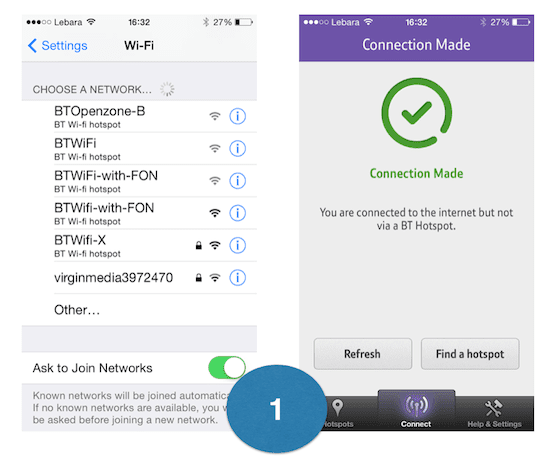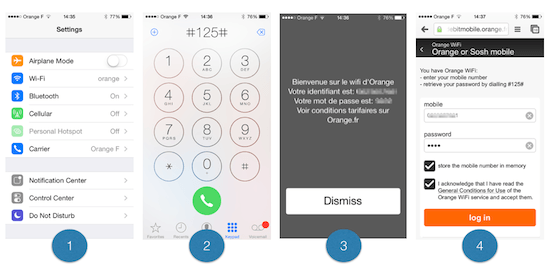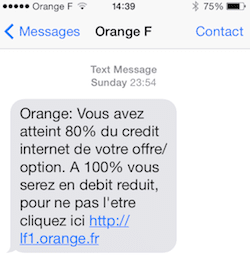Most futurists or “futurologists” have predicted that access to the Internet will be everywhere. Even if the “Internet of Things” (IoT) may be considered a trendy trending term, the vision of hyper connectivity all the same continues to excite me. However, caveat emptor: remember that the road to such hyper connectivity is paved with user or customer experience. {Tweet this} As exciting as having my clothes, watch and fridge connected to the Internet may be, I am now convinced that the road there will be paved with heartache and headache. Companies that are wishing to take advantage of hyper connectivity will inevitably have to pass through some kind of service providers. At the moment, that remains a terrain occupied by telco companies scrambling, if not struggling to stay up with the digital wave. This wave requires telco companies to resolve two issues:
- The need to function differently internally (i.e. execute a digital transformation)
- To find a way to keep up with the latest technologies and infrastructure requirements (and necessary investments) in a sustainably profitable manner
The road to the Internet of Things…
In order for an object to be connected, it must pass through a network. Today, one of the more ambient technologies is wifi. Until such time as the mobile communication platforms (e.g. 4G, 5G…) become ubiquitous and powerful enough, wifi will continue to have its use. Wifi access that is robust can provide connection speeds up to 10x faster than via the normal mobile network. As a habit (also because I travel a lot and wish to avoid unncessarily high roaming charges), I like to evaluate the ways that companies (e.g. retailers, shopping malls…) are offering wifi. For example, I will tend to read the small print and check the access and speed of the network. I also like to see how telcos are providing wifi access out on the streets.
The battle for the public space
The provision of a connection to the Internet can become a strategic decision. In London, for example, O2 provides free wifi — even to non-O2 clients — through partnerships with many well-known shops and restaurants, which populate the most touristic streets (Oxford Street, Kensington High Street, King’s Road…). Virgin Media has provided wifi hotspots for paying customers in some 144 London tube stations. British Telecom provides a series of different wifi hotspots and ways to connect for its customers, above ground. If you are a BT customer, you can get your smartphone to automatically sync up with a hotspot without doing a single thing. While the BT hotspots are far from ubiquitous and the connection hook-up can take quite a while, depending on the location and how many other people might be signing up, the experience is reasonably painless. As Figure 1 shows, the connection via any one of the BT listed hotspots happens automatically without further need for authentification, once you have signed up. It can literally be a seamless process.

Improving customer experience
In any event, the BT system appears to be a great solution when compared to the process provided by its equivalent player in France: Orange (ex France Telecom). With Orange France, it is an arduous four-step process that you need to repeat whenever the connection is lost.
- First, you need to locate the Orange wifi hotspot in the settings
- Then dial #125# (from your phone) to receive a text message with a code
- Once you receive the code, you need to hit the DISMISS button (this is really a nuisance if, perchance, you get distracted and forget the four digit code, in which case you have to re-enter the #125#)
- Open up a browser and log in to mobile.orange to input your mobile number (which you can commit to memory) and four-digit code.
- Then you are done!


Orange’s four-step process is, to say the least, laborious. I was inspired to write about this poor customer experience, not only because of the available comparison across the Channel, but also because I was kindly informed by Orange that I only had a few more MB left on my data plan before I would get downgraded to neanderthal speed connection (see message to the right). Thus, I was obliged to seek the “free” wifi when out and about. Having to make the obstacle course multiple times throughout the day was less than agreeable.
Conclusion
My conclusion is that hyper-connectivity remains desirable and exciting. However, according to how the connection is actually made and which service provided is manning the connection, the customer experience may be less than optimal. Imagine having to do four such steps each time you wanted to make a telephone call. I thought we had moved along from that!











great article Minter as always. Lookup Sigfox, great French startup!
http://pro.01net.com/editorial/622520/01-replay-sigfox-le-premier-operateur-de-linternet-des-objets/